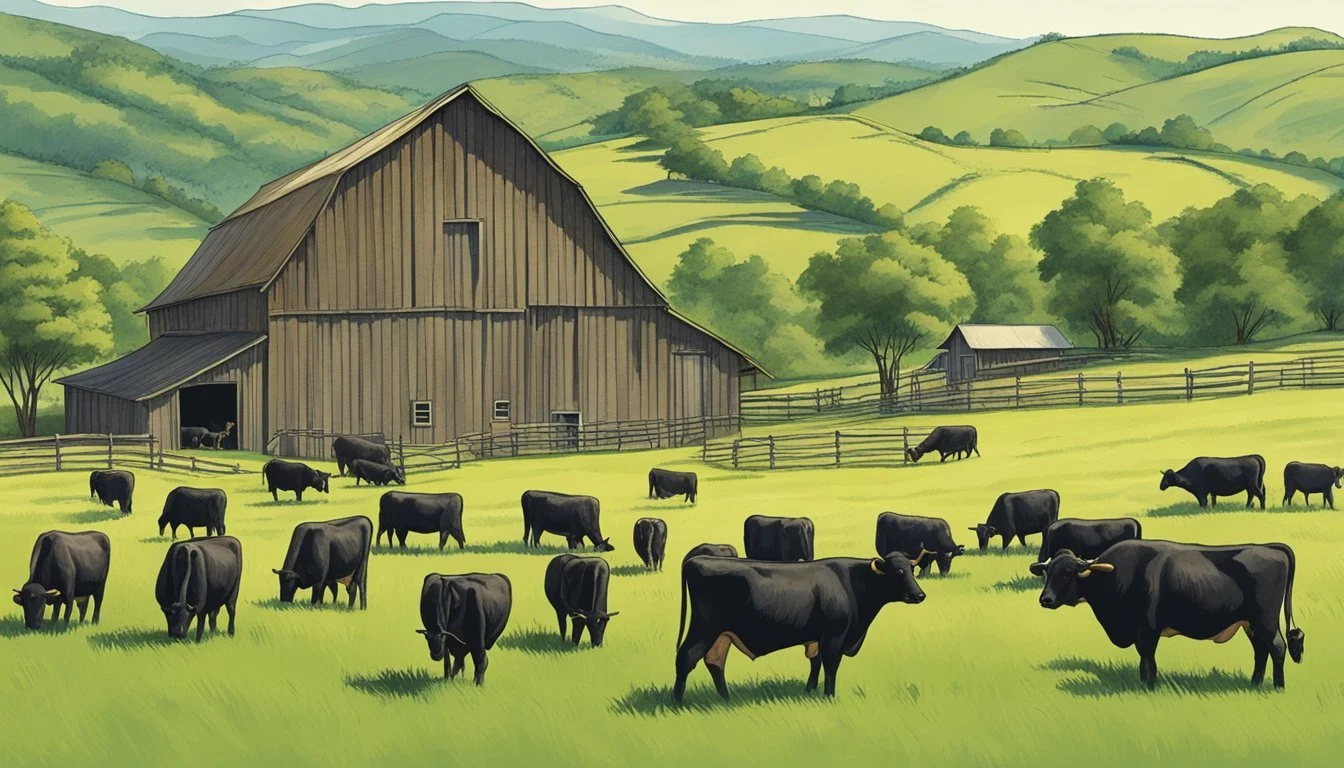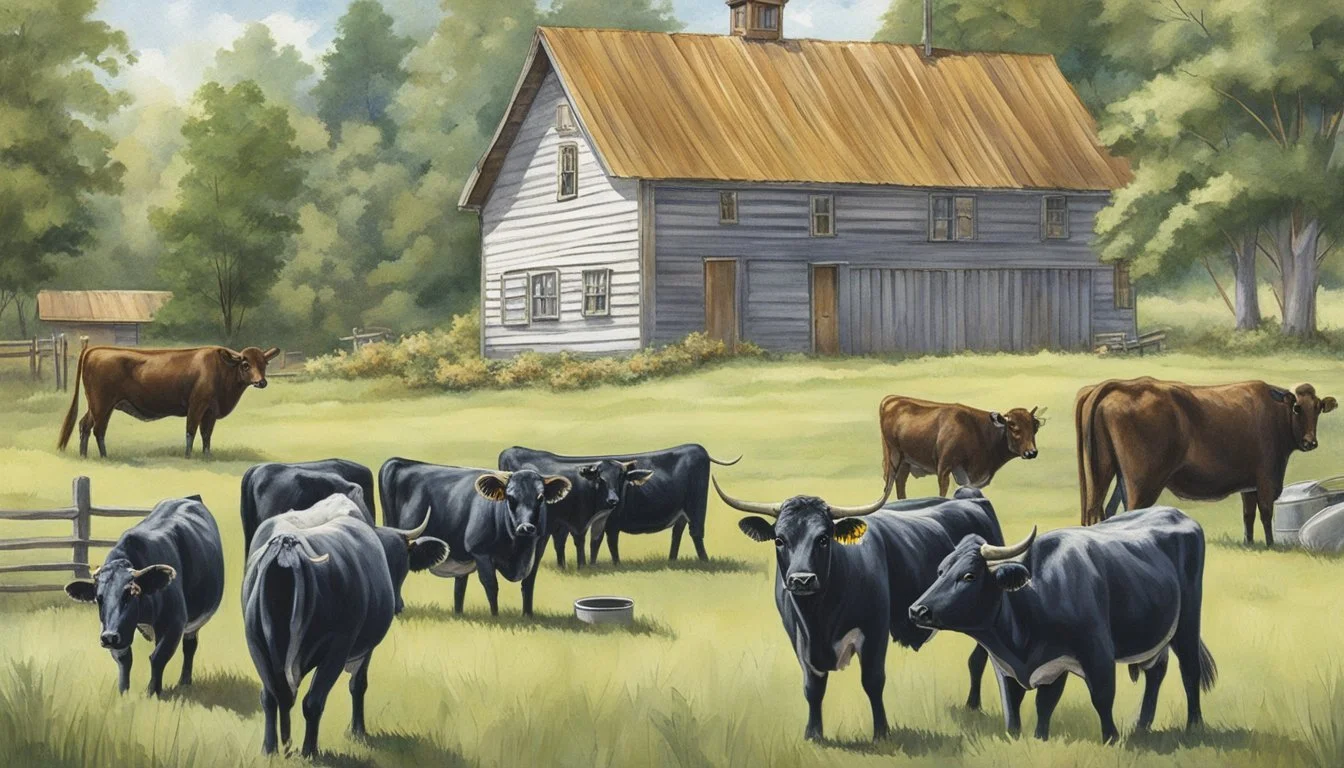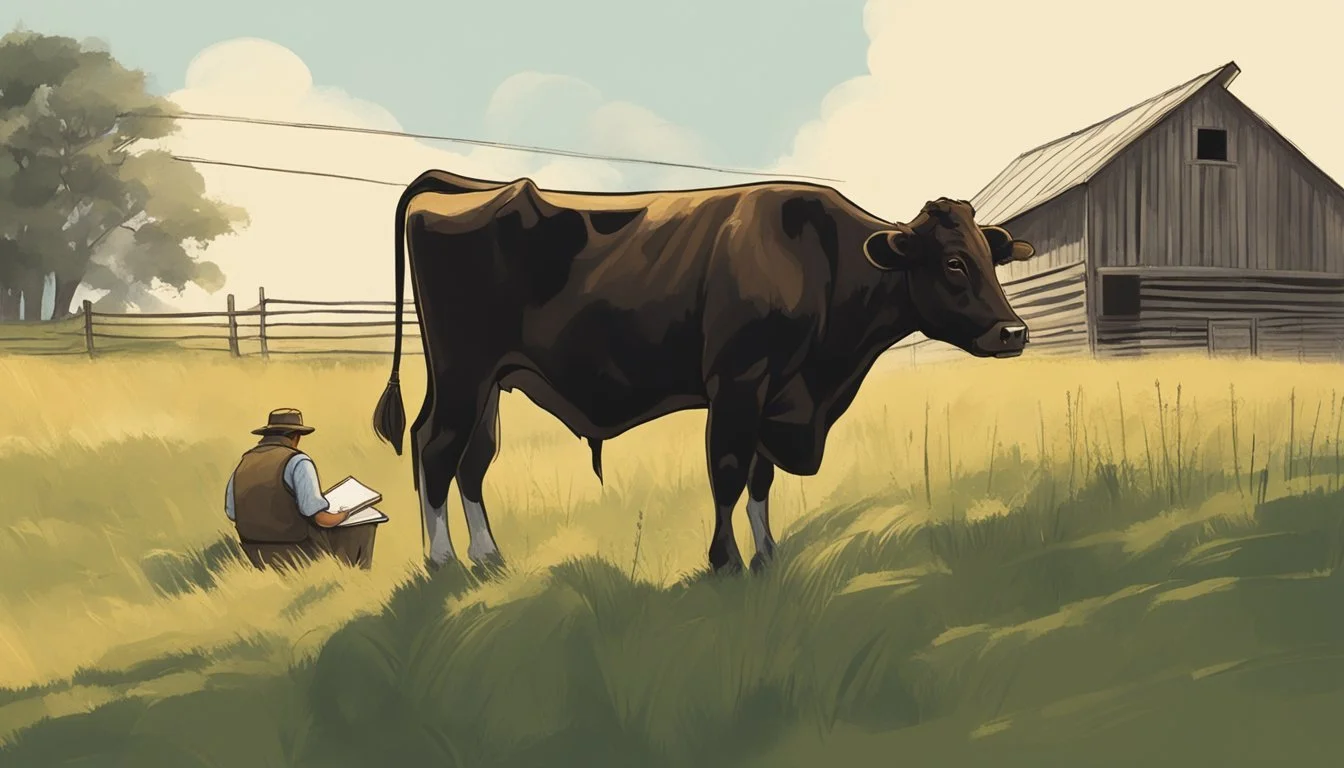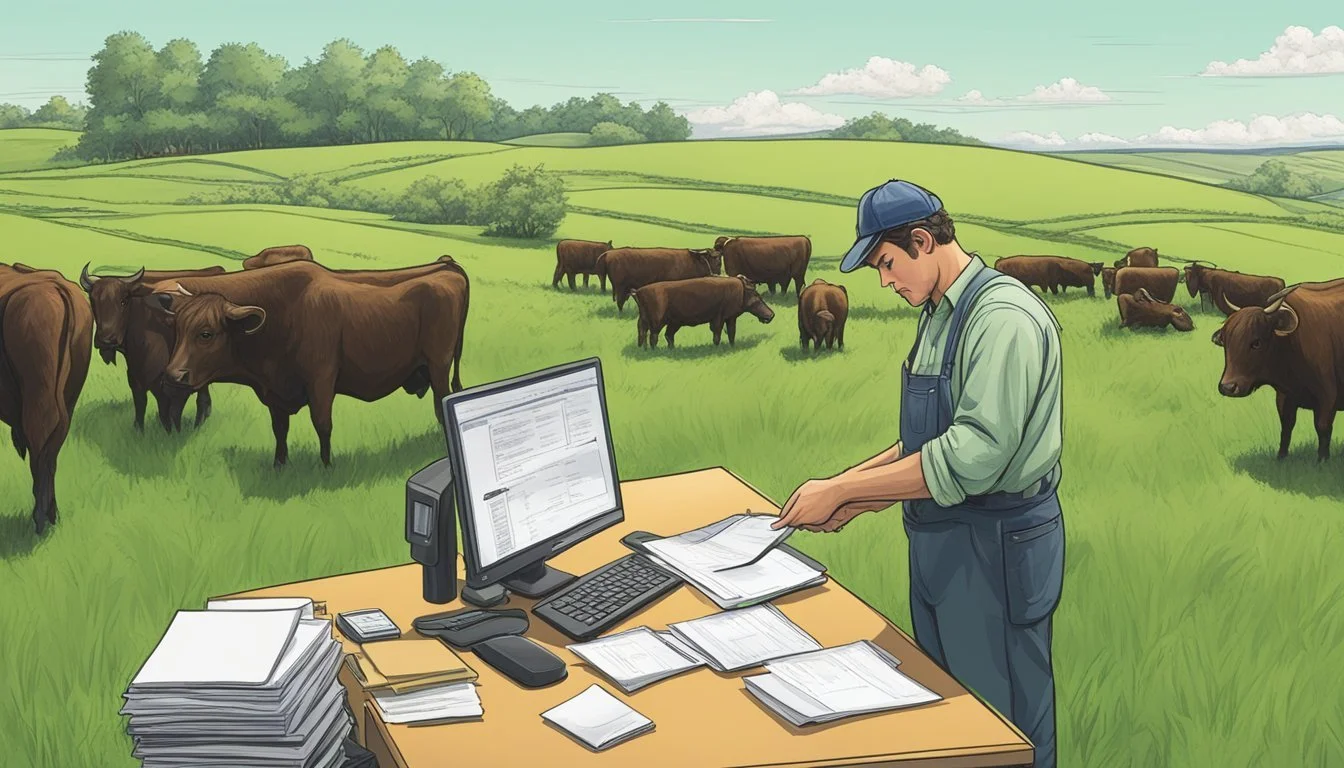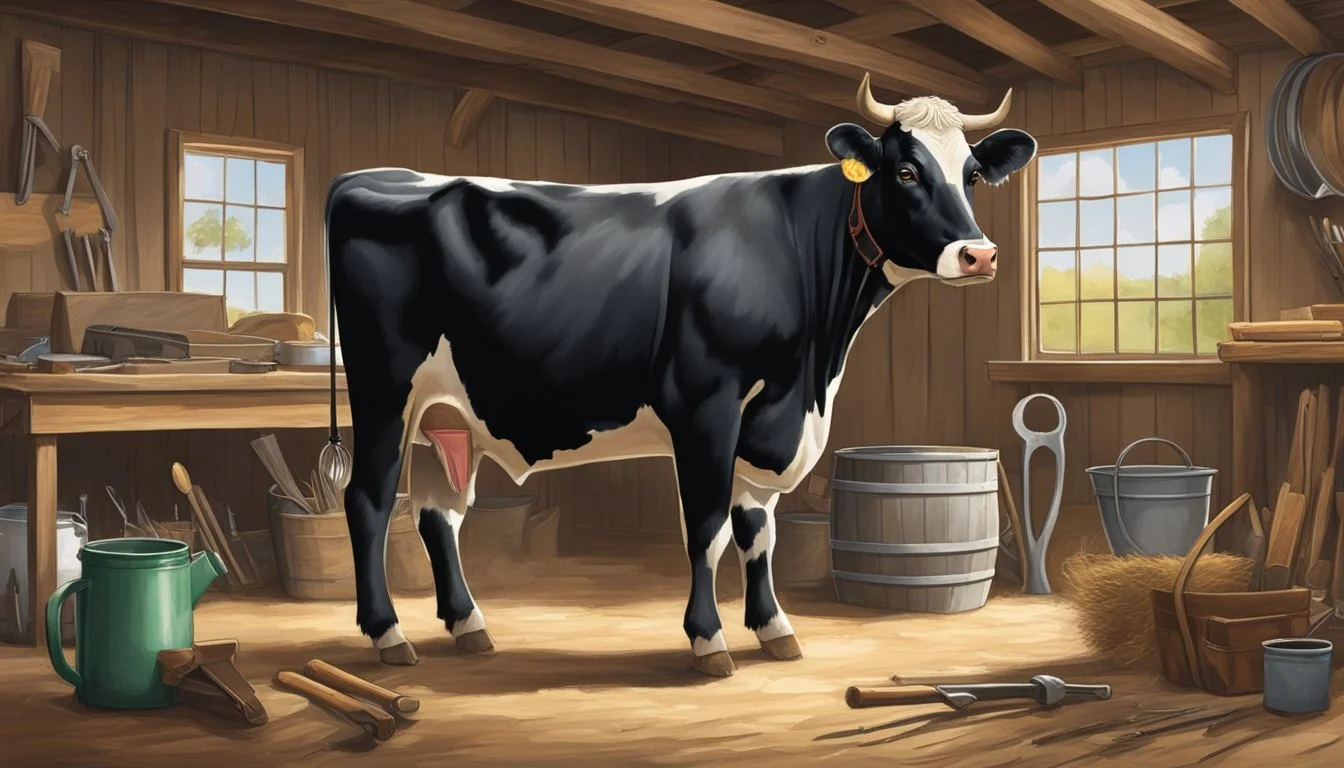Dexter Cattle Registration and Record Keeping
Essential Practices for Homesteader Livestock Management
Dexter cattle are a versatile breed that has become a favorite among homesteaders due to their manageable size, dual-purpose yield for both meat and milk, and gentle temperament. The registration of Dexter cattle plays a crucial role in maintaining the integrity of the breed, providing a lineage trace that is invaluable for breeders and owners. By registering their livestock, homesteaders contribute to a centralized database that preserves the genetic history and pedigree of individual animals, ensuring the Dexter breed standards are upheld for future generations.
Accurate record keeping is another essential aspect of raising Dexter cattle on a homestead. Homesteaders who keep thorough records of their livestock's health, breeding, and productivity are better equipped to make informed decisions that can impact the success and sustainability of their farming operations. Records help in identifying trends, managing breeding programs, and marketing cattle effectively. Moreover, this level of organization can be beneficial when engaging with other breeders, discussing with veterinarians, or complying with regulations.
For those in the homesteading community, being informed about the specifics of Dexter cattle registration and the importance of meticulous record keeping can lead to improved management of their herds. Not only does this contribute to the well-being of their livestock, but it also enhances the quality and reputation of the Dexter cattle breed as a whole. As such, investing time and attention into the registration and documentation of their Dexter cattle is a practice that homesteaders may find rewarding both ethically and economically.
The Dexter Breed: An Overview
The Dexter breed, renowned for its adaptability and compact size, offers homesteaders an efficient bovine option. This section delves into the breed's history, identifiable physical traits, and the range of color variations seen in Dexters to provide readers with a foundational understanding.
History and Origin
Originating from Ireland, Dexter cattle are one of the smallest European cattle breeds, descending from the mountain cattle of the region. Their development dates back to the early 19th century, and they were first imported to America in the early 1900s. Kerry and Dexter cattle were recorded together until their separation in registration led to distinct recognition of the Dexter breed.
Physical Characteristics
Dexter cattle are known for their diminutive stature, muscular build, and hardiness. Adult Dexter cows typically stand between 36 to 42 inches at the shoulder, while bulls reach approximately 38 to 44 inches. Despite their size, they are proportionately built and are known for their excellent meat quality and high milk yield considering their smaller frame.
Color Variations
The breed exhibits three solid colors: black, red, and dun. All three colors are accepted for registration, with black being the most common, followed by dun and then red. Dexter cattle can also be polled (naturally hornless) or horned, with the polled gene becoming increasingly prevalent among breeders focusing on ease of handling and safety.
Dexter Cattle as a Multipurpose Homestead Animal
Dexter cattle offer homesteaders versatility in milk production, beef quality, and a range of other uses. These compact and efficient animals are capable of converting grass into valuable resources for small-scale farming.
Milk Production
Dexter cows produce approximately 1½-2½ gallons of milk per day, which is rich in butterfat, ranging from 4% to 5%. This high butterfat content is excellent for homesteaders interested in making products like cheese and butter. Additionally, their milk's high solids content makes it an efficient option for small-scale dairy processing.
Beef Quality
As a dual-purpose breed, Dexter cattle provide not only milk but also high-quality beef. Their meat is well-regarded for its flavor and tenderness, making these cattle an ideal choice for grass-fed beef operations. Homesteaders can benefit from raising Dexter cattle for their lean, nutritious beef which has a good market demand.
Other Uses
Dexter cattle have traditionally been used not only for beef and milk but also as draft animals. Their smaller size makes them suitable for various farm tasks and weed clearing, benefiting homesteaders aiming for self-sufficiency. Byproducts like hides can be used for leather goods, and surplus milk may be converted into soap, further enhancing their utility on a homestead. Dexter cattle offspring also contribute to the sustainability of a homestead by allowing for herd expansion or sale.
The Importance of Registration
Registration of Dexter Cattle is a crucial step for homesteaders to ensure the integrity of breed lines and facilitate the transfer of ownership. A registered Dexter provides breeders with official documentation that verifies the animal's pedigree and genetic background, contributing to the breed's overall health and sustainability.
American Dexter Cattle Association (ADCA) Registration
The ADCA is responsible for maintaining the official herd book for Dexter Cattle in the United States. Breeders looking to register Dexter Cattle should understand that the ADCA sets forth specific regulations to protect all parties involved, including buyers and sellers. ADCA registration provides multiple benefits such as:
Validation of the cattle’s breed purity
Access to a community with mentoring programs for new Dexter owners
The ability to participate in ADCA-sponsored events
To commence registration, breeders must submit a registration application along with the appropriate payment. The registration process includes parentage verification, ensuring the legitimacy of the Dexter's lineage. For assistance, breeders can contact the ADCA at 1-844-588-2322.
Pedigree and Genetic Testing
A registered Dexter's pedigree is a documented record tracing the animal's ancestry, which is essential for breeders when making informed breeding decisions. It guarantees the purity of the breed and helps in preserving desirable traits.
Genetic testing plays a significant role in the registration process. The ADCA may require tests such as:
PHA (Pulmonary Hypoplasia with Anasarca) testing to screen for genetic conditions
Parentage verification through DNA profiling
These tests confirm the animal's lineage and ensure the health and vitality of the breed. A thorough genetic screening can protect against hereditary diseases, thereby supporting the credibility and quality of the Dexter breed.
Record Keeping for Dexter Cattle
Maintaining accurate records is vital for Dexter cattle owners. These records ensure the integrity of the breed's lineage and facilitate effective management of herd health and productivity.
Essential Records to Maintain
Owners should keep comprehensive records for each animal, including:
Identification: Ear tag numbers, tattoos, or USDA 840 tags should be recorded.
Pedigree: Document the sire (father) and dam (mother) for genetic tracking.
Registration: Record each animal's registration number upon official recognition with breed associations like the American Dexter Cattle Association (ADCA).
Sales Documents: Preserve a bill of sale, especially when transferring ownership.
Contact Information: Updates on ownership should include new owners' contact details, potentially a PO Box 209, Stephenville, TX 76401 for the ADCA.
Health and Veterinary Care Documentation
The health of Dexter cattle directly impacts their dairy and beef production capabilities. Therefore, it is essential for owners to maintain:
Medical Records: Every veterinarian visit, vaccination, and medical treatment must be recorded.
Udder Health: For cows, detailed records of udder health help in managing dairy productivity and prevent issues like mastitis.
Owners should always have these documents accessible for reference and update them regularly to manage their herds effectively.
Homestead Management of Dexter Cattle
Managing Dexter cattle on a homestead requires attention to their dietary needs, appropriate shelter, and strategic breeding practices. For homesteaders, these cattle represent a dual-purpose breed known for their manageable size and hardy nature, suitable for both milk and meat production.
Feeding and Nutrition
Dexter cattle are renowned for their efficiency in converting feed into high-quality beef and milk. They typically require less feed than larger breeds, making them ideal for homesteads with limited land. A balanced diet for a Dexter should include:
Quality Forage: Grass, hay, or silage should make up the bulk of their diet.
Concentrates: To supplement their nutritional needs, especially during lactation or growth.
Minerals and Vitamins: Ensuring that Dexters receive adequate minerals and vitamins is crucial for health and vigor.
Feeding Table: Dexter Cattle Daily Diet
Cattle Type: Lactating Cow, Forage (lbs): 25-30, Concentrates (lbs): 5-10, Minerals (As Needed): Yes
Cattle Type: Growing Calf, Forage (lbs): 10-15, Concentrates (lbs): 2-5, Minerals (As Needed): Yes
Cattle Type: Non-Lactating Cow, Forage (lbs): 20, Concentrates (lbs): 0-5, Minerals (As Needed): Yes
Housing and Shelter Requirements
Dexter cattle, while hardy, still require proper shelter to protect them from extreme weather conditions. Their manageable size allows for smaller, more economical housing solutions. Key requirements include:
Dry Bedding Area: To rest and maintain hoof health.
Adequate Ventilation: To prevent respiratory issues.
Protection from Elements: Especially during winter or in harsh climates.
The shelter design should allow for easy handling and movement of the animals, as well as facilitate regular health checks and safe calving practices.
Herd Management and Breeding
Selective breeding in Dexter cattle is essential for maintaining the breed's strong characteristics, such as good conformation, ease of handling, and being excellent mothers with minimal calving difficulties. Herd management practices for homesteaders should include:
Record Keeping: Monitoring breeding cycles, health, and growth for constant herd improvement.
Routine Health Checks: Keeping an eye on body condition, feet health, and overall well-being.
Breeding Strategy: Planning matings to maintain genetic diversity within the herd and to produce offspring with desired traits.
Homesteaders can produce manageable quantities of milk and beef for the family cow while ensuring the sustainability and improvement of their Dexter cattle herd.
Economic Considerations for Dexter Cattle Owners
For homesteaders, managing the economics of Dexter cattle ownership involves understanding the costs associated with the specific breed and the potential for financial return. This comprehension aids in making informed decisions about buying, selling, and investing in Dexter cattle.
Buying and Selling Dexter Cattle
When purchasing Dexter cattle, one should consider not only the initial cost but also the pedigree, health, and registration status of the animal. Registered Dexter cattle, which can be confirmed through associations like the American Dexter Cattle Association, often fetch higher prices due to verified lineage. Buyers typically look for well-documented health records and registration certificates to assure the quality of their investment. Conversely, when selling Dexter cattle, owners can leverage these registration documents to negotiate better prices, asserting the authenticity and value of their livestock.
Key components affecting price when buying or selling Dexter cattle:
Pedigree and Registration: Animals with documented pedigree and registration status are more valuable.
Health and Fitness: A well-maintained healthy animal commands a better price.
Market Demand: Prices fluctuate with supply and demand for the breed.
Costs and Returns on Investment
Investing in Dexter cattle involves various costs, which include but are not limited to purchase price, feed, veterinary care, and registration fees. The specific breed, known for dual-purpose milk and beef production, offers multiple benefits that can lead to diverse income streams for ranches. Homesteaders should account for ongoing expenses versus potential revenue from milk sales, meat production, and breeding services.
A simplified breakdown of potential costs and returns might look as follows:
Costs:
Feed: $X per month
Veterinary care: $Y annually
Registration: $Z per animal
Returns:
Milk sales: $A per month
Beef production: $B annually
Breeding services: $C per service
These figures illustrate the importance of strategic financial planning and recognizing the economic impact of Dexter cattle as both a cost and an investment on homesteads.
Breeding & Improving Dexter Cattle Herds
Strategic breeding and diligent record-keeping are pivotal for homesteaders aiming to enhance their Dexter cattle herds. By selecting exemplary sires and dams, applying genetic principles, and evaluating offspring, breeders can ensure sustained improvement and the prosperity of their livestock.
Selecting Sires and Dams
The choice of sires and dams is foundational in breeding programs. Breeders opt for purebred animals with desirable traits to pass on to their offspring. The sire contributes significantly to the herd's genetic makeup, and, therefore, should be chosen for his robust genetics, good health, and alignment with breed standards. Dams should also be selected carefully, with attention to their ability to calibrate desired traits in calves, their milking aptitude if share-milking is a priority, and their overall contribution to the genetic diversity of the herd.
Criteria for Sire Selection:
Adherence to breed standards
Genetic health screening
Physical conformation
Temperament
Criteria for Dam Selection:
Milk production history (if relevant)
Easy calving record
Proven track record of healthy offspring
Genetic diversity considerations
Advancing Herd Genetics
Advancement in herd genetics is achieved through meticulous breeding strategies. Breeders aim for genetic improvement which involves understanding heritability and the incorporation of proven sires and dams into the breeding program. The goal is to enhance traits such as size, meat quality, or milk production, without compromising on the overall health and adaptability of the cattle. Mentorship programs and networking with experienced breeders can provide invaluable insights into advanced breeding techniques and genetic management.
Strategies for Genetic Advancement:
Utilize performance records and pedigrees
Employ artificial insemination for access to superior genetics
Prioritize traits with high heritability
Collaborate with other breeders for best practices
Offspring Evaluation
The evaluation of offspring is crucial for the continuity of herd improvement. Breeders assess calves for adherence to breed standards, growth rates, and health status. These evaluations guide future mating decisions and can identify potential candidates for future sires and dams. Scrutiny of offspring allows breeders to adjust their breeding program promptly, ensuring continuous herd enhancement and the longevity of desirable traits.
Offspring Evaluation Criteria:
Weight gain and developmental milestones
Physical conformation compared to breed standards
Health screenings and vaccinations
Temperament suitable for homestead environments
Community and Education for Dexter Cattle Enthusiasts
For enthusiasts of Dexter cattle, connecting with a supportive community and accessing educational resources are crucial steps for effective breeding and record-keeping.
Connecting with Breeders and Associations
Engaging with breeders and becoming a member of associations such as the American Dexter Cattle Association (ADCA) is essential. These associations offer a platform where enthusiasts can access a wealth of information, ranging from breeding standards to record-keeping practices. They also provide opportunities for members to participate in events and stay updated with the latest developments in the care of Dexter cattle.
Key benefits of joining an association include:
Networking: Meet experienced breeders who can serve as mentors.
Resources: Gain access to a variety of educational materials and breed-specific guidelines.
Events: Ability to enter competitions and shows, which can enrich one's experience as a hobbyist or homesteader.
Learning from Others' Experiences
The value of learning from the Dexter cattle community cannot be overstated. Through platforms like Facebook groups for Dexter Cattle Enthusiasts, members can share their experiences and provide assistance on diverse issues including registration and record-keeping.
Examples of community support include:
Discussions on best practices in cattle care and regulatory compliance.
Advice from experienced owners about record-keeping and lineage registration.
It's vital to maintain civil interactions and stay focused on relevant topics to the welfare and management of Dexter cattle within these communities. Such dialogue not only strengthens one's own knowledge but also contributes to the collective education of the group.
Additional Resources and Support
For Dexter cattle owners and homesteaders seeking assistance with registration and record keeping, an array of resources are readily accessible. They facilitate streamlined processes and ensure that the needs for accurate documentation and knowledge are met.
Useful Contacts and Addresses
American Dexter Cattle Association (ADCA)
Mail: PO Box 209, Stephenville, TX 76401
Phone: 1-844-588-2322
Email: Utilize the 'Contact Us' feature on the ADCA website for specific inquiries.
The ADCA serves as the primary contact point offering guidance for registration and transfer procedures for Dexter cattle. Their established regulations and support network ensure that breeders, buyers, sellers, and owners maintain exemplary records in compliance with breed standards.
Relevant Literature and Guides
The ADCA provides a range of literature and guides essential for Dexter cattle registration and breeding information:
Owner's Handbook: Outlines the standards and characteristics desirable in Dexter cattle which applies to both dairy and beef production.
Standard Operating Procedures: Details the procedural nuances of registration, exemption conditions, and transfer processes within the ADCA framework.
These documents are tailored to support the Dexter community in maintaining adherence to the breed standards and provide educational material for both novice and experienced Dexter cattle enthusiasts.


